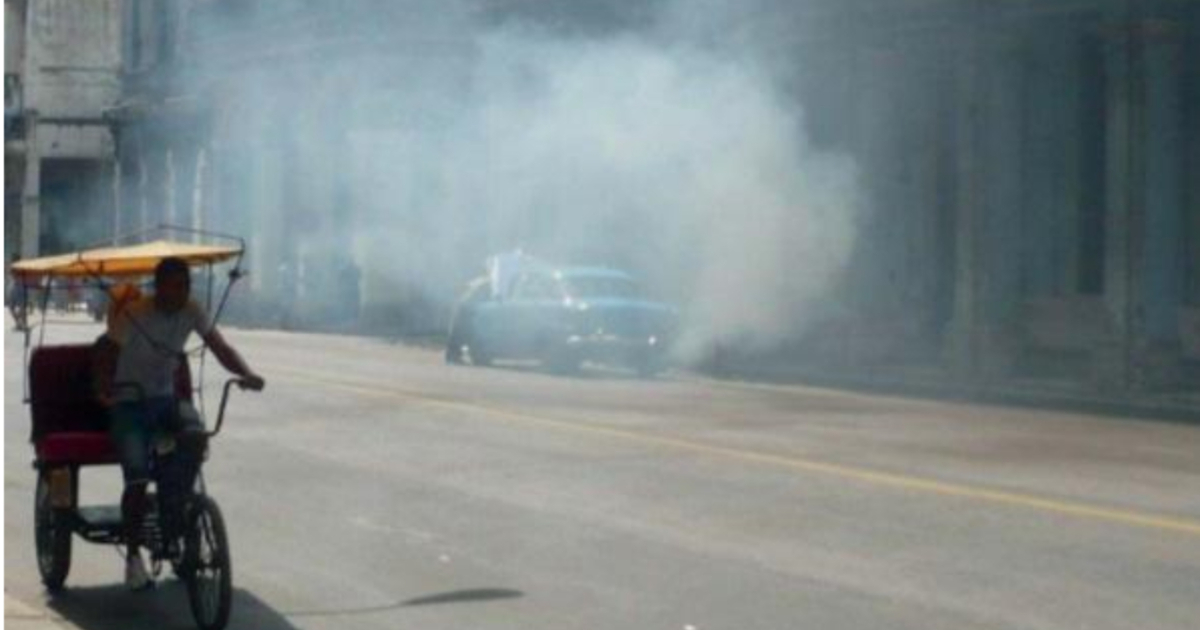
Moa, Mariel andNew They are three of the municipalities that emit the greatest amount of polluting substances into the atmosphere in Cuba, according to a recent study revealed by official media.
They complete the list of cities with the worst levels of air qualityHavana, Santiago de Cuba, Hundred fires andMatanzas, according to research carried out in the last three decades by the Center for Atmospheric Pollution and Chemistry (Cecont), of the Institute of Meteorology.
These studies revealed that among the main causes associated with air pollution in Cuba areterritorial planning errors, the use ofobsolete technologies, especially in industry and transportation, andlack of treatment systems efficient, reported the official newspaperGranma.
Doctors of ScienceRosemary Lopez Lee andOsvaldo Cuesta Santos, director and former director of Cecont, respectively, explained that the national inventory of emissions from the main fixed polluting sources showed that thesulfur dioxide (SO2) It is the pollutant that is most emitted into the atmosphere in Cuba, followed bynitrogen dioxide (NO2) and thecarbon monoxide (CO), linked to the burning of fossil fuels
Emissions of particulate matter PM 10 and PM 2.5, and volatile organic compounds other than methane, are also important, they stated.
“The municipalities of Moa, Mariel and Nuevitas are the largest emitters of SO2, NO2 and CO at the national level. Those of Cienfuegos and Matanzas also show unfavorable indicators,” they toldGranmathe specialists.
The territories of the Mariel-Varadero coastal stretch, including Havana, Cienfuegos, Santa Clara, Nuevitas and the mining-metallurgy area of northern Holguín, are the most exposed to the acidification of rains on the island, according to the research.
Exposure to harmful gases severely affects the health of pregnant women, children, the elderly and people with respiratory diseases, cardiovascular diseases and cancer.
The director of Cecont confirmed that in Havana the biggest pollution problems are located inOld Havana, Regla, Diez de Octubre, Cotorro, Centro Habana and San Miguel del Padrón.
The most compromised areas of the capital, located around the bay, are related to emissions from the Ñico López refinery, the Regla generating set and the Tallapiedra thermoelectric plant.
According to Cuesta Santos, In Cuba there was an urban network designed to control air quality that functioned effectively until the end of the 1980s but collapsed during the Special Period.
It is now necessary to redesign the national environmental monitoring system, which verifies the behavior of gas and aerosol emissions, as well as the chemical composition of rain. The current network is made up of five main stations and 11 secondary stations, said the specialist.
Theabsence of a Decree-Law specific on protection of the atmosphere does not allow action to reverse air pollution, he stated.
It is urgent to reactivate and modernize the monitoring system and prioritize, through the application of comprehensive solutions, the treatment of industrial emissions in the national economy plans.
Research carried out years ago on pollution in the Moa municipality, in the province of Holguín, showed that almost half of the population in that areasuffer from acute respiratory illnesses and are more likely to die from cancer lung than residents of other areas of the region.
The citizens of that site have been under thepolluting effects of toxic gases in the atmosphere emitted by the "Pedro Sotto Alba" plant, which is operated by Moa Nickel S.A., a mixed Cuban-Canadian mining exploitation company with the participation of Sherritt International.
The authorities continue without resolving the pollution situation on the island. Specialists criticized some time ago that it would be difficult to approve a budget to solve these atmospheric problems due to its high cost and problems of government disinterest.
In addition to the serious epidemiological situation in Cuba, where dengue outbreaks are increasing and medicines are in short supply, poor air quality could worsen respiratory diseases if the government does not address emissions of atmospheric pollutants.
What do you think?
COMMENTFiled in: